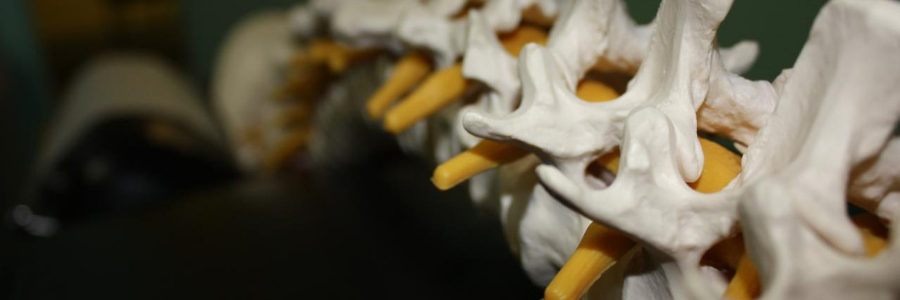
Thoracic (mid back) osteophytes
Thoracic (mid-back) osteophytes are also called bone spurs. Osteophytes are bone projections that develop around cartilage or tendons. They typically occur near joints in the mid-back and upper back (i.e. thoracic spine). Osteophytes are usually first noticed because they irritate or inflame joint structures and nerves. Spinal joints that undergo wear-and-tear, or processes such as arthritis, will typically develop bone spurs. Thoracic osteophytes will usually only produce pain if they irritate a pain-sensitive structure, such as joint structures or nerves.
How do thoracic osteophytes come about?
Osteophytes generally form due to a process known as degeneration, for more information on this please see this technical article on spinal degeneration. The basic pathophysiology is:
- Excessive mechanical stresses (age, genetic and lifestyle factors) leads to structural derangement of spinal joints.
- Cartilage in this area becomes degenerated, affecting the movement of the joint. Initial degeneration fo cartilage may initiate the release of further enzymes that accelerate the breakdown of cartilage. This acts as the trigger for osteophyte formation.
- Osteophytes express transforming growth factor β, a factor that is involved in the initial formation and also in the later developmental stages of bone spurs. Expression of growth factors and mediators play a key role in the formation of osteophytes.
- Osteophytes contain fibroblasts, pre-chondrocytes, maturing chondrocytes, hypertrophic chondrocytes and osteoblasts. Type II collagen is the most prominent component in the cartilaginous zone of osteophytes.
- Ligaments thicken and begin to calcify, resulting in particles of bone or bone spur formation.
Why do thoracic osteophytes occur?
Risk factors for thoracic osteophytes include:
- Age (45 years old)
- Previous traumatic injury to the thoracic spine
- Genetics
- Obesity
- Manual occupations
- Alcohol and/or tobacco abuse
- High-impact sports and activities
Symptoms
The symptoms of thoracic osteophytes vary. In many cases, there are no symptoms associated with osteophytes. Osteophytes may only be seen incidentally on an x-ray to have knowledge of there existence. Osteophytes and degenerative discs typically occur in the same process therefore pain may originate from this process.
Treatment
The treatment of thoracic osteophytes depends on many factors such as their location, size, the severity of symptoms and complicating factors. Chiropractic treatments are useful. For more information please contact your medical doctor or chiropractor.
More information
Please visit our website for more related articles and blogs:
- Thoracic myelopathy
- Thoracic spine trauma
- Thoracic osteophytes
- Thoracic bone Spurs
- Thoracic spine stenosis
- Thoracic degenerative disc disease
- Thoracic arthritis
- Thoracic foraminal stenosis
- Thoracic pinched nerve
- Thoracic facet syndrome
- Thoracic facet joint pain
- Thoracic disc bulge
- Thoracic disc protrusion
- Thoracic spondylosis
- Thoracic spondyloarthropathies
- Thoracic radiculopathy
- Thoracic discogenic pain
- Acute mid back pain
- Chronic mid back pain
- Stiff mid back
- Thoracic spine tumour
- Upper back arthritis





